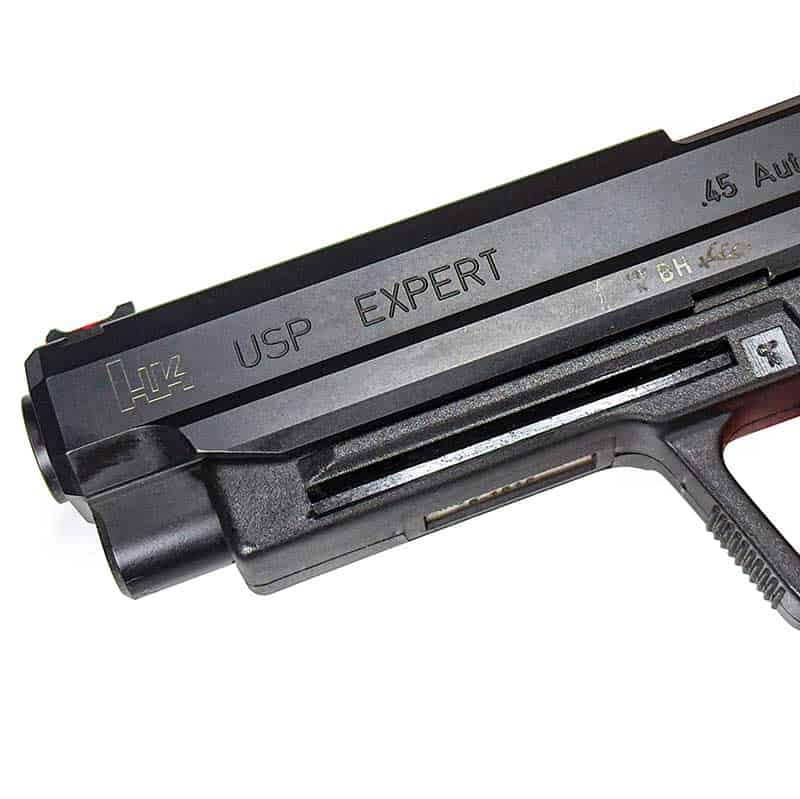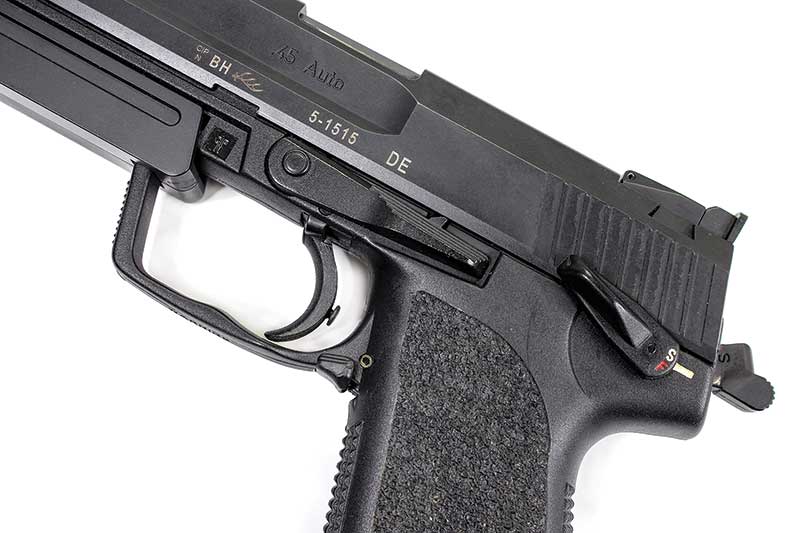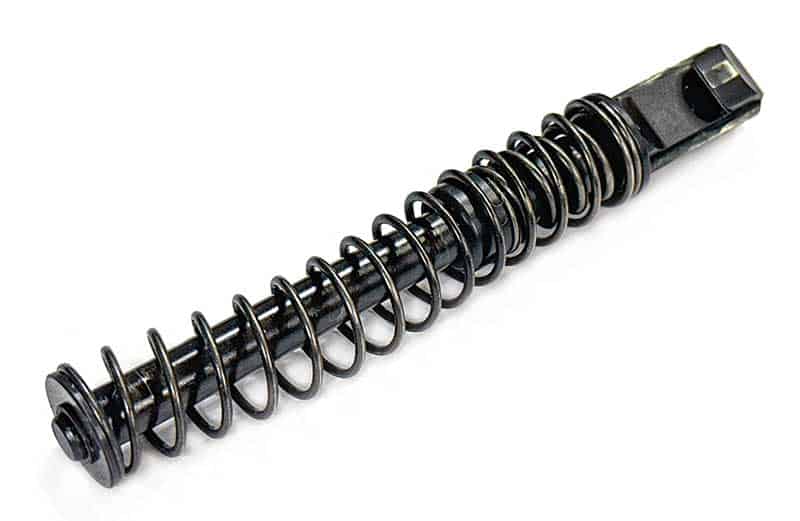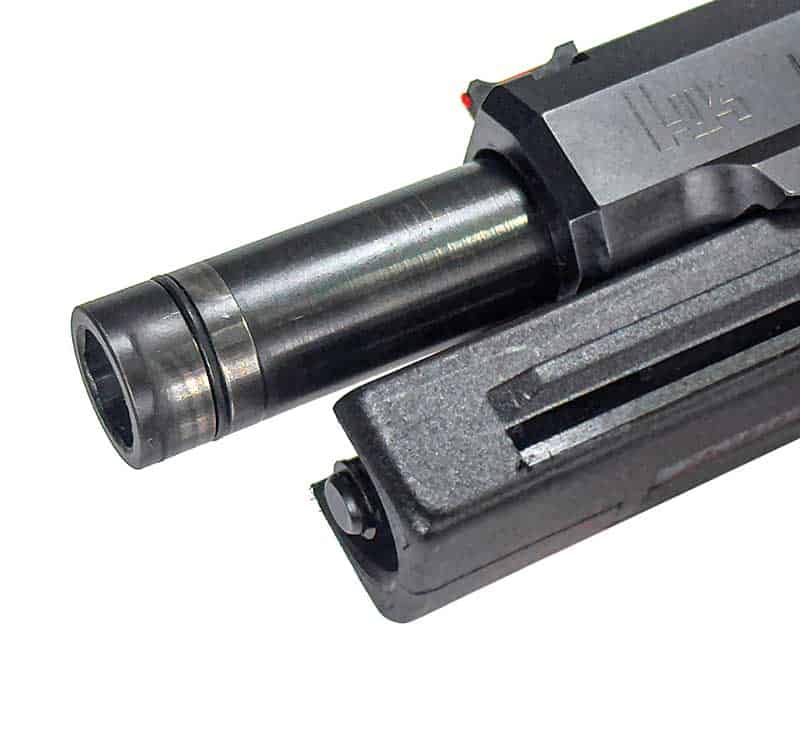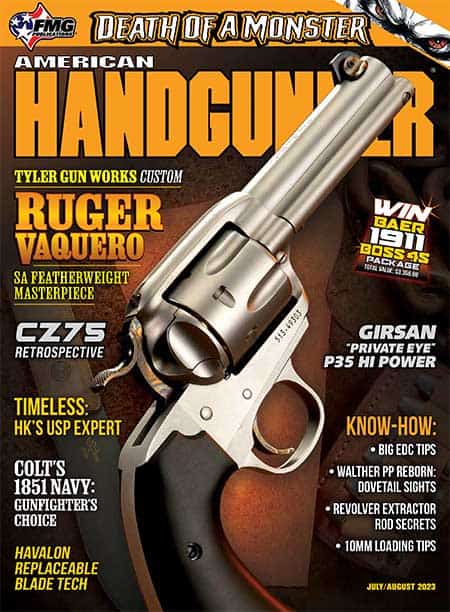HK's USP Expert
Decades Later, It's Still a Great Choice
It’d be hard to find a car nut who didn’t consider the first-generation Ford Mustang a triumph of American engineering and automotive design. Even today, I can’t help but think it’s really darn neat to see them on the road, and they’re still turning heads just as they did in 1965.
To nobody’s surprise, you can’t walk into a Ford dealership and buy that same car. You can buy a 2023 Mustang, of course. Ford would tell you the Mustang you can purchase now is a better car than the 1965 model; in over half a century, they’ve improved the car’s handling, power, safety features and countless other amenities.
By and large, we’re conditioned to think this is the natural order of things: the 1965 Mustang begets the 2023 Mustang, the iPhone 7 begets the iPhone 14, the Intel dual-core processor begets the Intel quad-core processor, and so on, and so forth. Time waits for no man, but as a consolation prize, time gives us cooler stuff at progressively lower prices if we manage to stick around long enough.
It’s generally gone the same way with guns. Witness today the number of firearms with bells and whistles like tritium sights, sub-5-lb. triggers, optic cuts, frame stippling, beavertails, extended controls, and gilt-edged accuracy as standard features. Not even the venerable 1911 has withstood the tides of change. Could John Browning have ever imagined the level of technology deployed to make his seminal design stronger, faster and more user-friendly?
At this point, we turn our gaze to Heckler & Koch. Today, consumers are understandably agog at the company’s VP9, and the P30L continues to draw longing stares every time someone watches a John Wick movie. Before those guns, however, H&K brought the HK45 to market, along with the well-regarded P2000 series of pistols.
But here’s the head-scratcher: H&K still catalogs the USP family in its product lineup — a line of pistols that initially hit the market in 1993. Certainly, some will question whether the USP still contends with the latest and greatest. I say this: Not only do these guns contend, but they also continue to excel. In my opinion, the Expert is the best of the bunch.
A Short History Lesson
The development of the USP series is fascinating and deserves a deeper dive than I can devote to it here. However, I did want to focus on a few details in particular.
First, perhaps no pistol has been more assiduously tested than the USP. As a prototype, the USP went for over 20,000 rounds without any detriment to accuracy or parts wear until H&K called it quits. When H&K designed the USP45, it passed another durability test of 24,000 rounds of +P ammunition, again with no consequence. All guns ran in extreme cold and volcano-hot temperatures alike.
How some USPs have held up since release is nothing short of mind-bending. H&K’s official Twitter posted a gun finally sent in for service after digesting 200,000 rounds. There are also anecdotal reports of a USP used as a test platform by an ammunition company still going strong after nearly 300,000 rounds.
Another interesting factoid: The USP and H&K’s famous Mark 23 “offensive handgun” were developed side-by-side; it isn’t necessarily accurate to say one was an offshoot of the other. What H&K learned testing the USP made the Mark 23 better, and some Mark 23 innovations bled back into the USP platform.
The USP Today
In nearly three decades since the USP’s release, some of what made it novel at the time has become de rigueur in 2023. In particular, a high-capacity gun with a polymer frame is no longer a connoisseur’s choice; it’s the industry default for a defensive handgun.
Compared to most of the duty-type polymer guns on the market, the USP has a few critical differences. The first is that it’s a hammer-fired, “traditional double action” design. Some consider this inferior to a striker-fired pistol; as acolytes of such platforms opine, “there’s only one trigger pull to master.”
While true, I no longer see this as a detriment. I’ve been shooting long enough that the long DA pull is no longer something I fear. I like the confidence of knowing the first round out of the tube requires a much more deliberate trigger press to touch off, and the DA-to-SA transition shouldn’t be too difficult for anyone reading these pages.
However, the USP family lets shooters of all kinds have their cake and eat it, too. If one so wishes, the novel safety/decocker lever allows the gun to be carried cocked and locked like a 1911. The lever is intuitive, and while some have posited that one could conceivably “off-safe” and inadvertently decock the gun, I find it’s hard to do this unintentionally in actual practice.
The USP also has its own method of magazine release I think is still good in the year 2023. Truly ambidextrous, the user needs only to push down a lever under the trigger guard. While John Browning mostly standardized the thumb button disengagement, the USP system allows me to easily swipe my thumb or right middle finger down over the part quickly and easily. It seems strange until you try it.
My favorite part of the USP, however, is a part that’s standard across all of the full-size guns in the family: the dual recoil spring. The figure I’ve seen thrown around by H&K and other scholars of the platform is a 30% reduction in recoil. Based on my experience with other .45 caliber platforms, including the HK45 (which lacks the system), I’d vouch for that number.
Simply put, the system feels like alchemy. As a general rule, a polymer gun should not shoot as soft as a 1911. And yet, the USP family mellows .45ACP recoil as well as anything I’ve ever shot.
The Expert’s Choice
The USP Expert was developed specifically for hard-use competition and is immediately recognizable by its 5.2″ barrel and lengthened slide. Naturally, the Expert benefits from the durability that comes standard with the platform, but H&K throws in a few extra bells and whistles. The adjustable sights deserve mention; I’ve found them very robust, and they contribute to a very good sight picture. I decided to pair them with a Dawson fiber optic front sight, giving me both speed and accuracy.
H&K also includes their match trigger system by default on the Expert. The numbers don’t seem amazing at first: SA is 4.5 lbs. on the dot, and the DA pull is a consistent 12 lbs. However, the DA pull lacks a telltale “shelf” or “stack” at the rear of travel, allowing for a pull that seems to fall off a table and ensure a surprise break. It’s the only DA/SA gun I own where I shoot the DA mode as well or better than the SA. The single action is crisp and repeatable with very little creep.
Perhaps the most novel aspect of the Expert (and the USP Elite) is an undeniable piece of Mark 23 DNA: a rubber O-ring about a quarter inch from the end of the barrel. This ingenious part ensures the barrel and slide lock up with just a little bit of extra consistency. Like anything else on the USP, it’s ready to put in work; H&K suggests it should be good for 10,000 rounds, though my Expert came with a few extra spares.
Accuracy is better than most shooters will be able to take advantage of. I’ve heard from other owners who report 25-yard bench-rested groups under an inch and a half. I’ve found that in my two hands, the gun easily allows me to shoot ragged holes within 7 yards, keep rounds within a 2″ bull at the 50-foot limit of my indoor range, and ring steel targets about the size of a dinner plate out to 75 yards. Again, this gun allows me to shoot very close to the ceiling of my own ability.
Is It For You?
Granted, some may encounter a few deal breakers. The .45-caliber, full-size USPs are big pistols. I’d absolutely trust my USP Expert in a home defense role, but I certainly wouldn’t want to try stuffing the thing inside of a waistband.
Beyond that, the family’s proprietary accessory rail hasn’t aged well; mounting just about any light or laser will require an adapter. Additionally, the USP series was designed in a time well before today’s current trend of micro red dots. There are companies making slide cuts and mounting plates that replace the rear sight but don’t expect such niceties as factory options.
Supposing one can hang with all of that, I’m hard-pressed to think of a polymer handgun that’s more accurate, easier to shoot, and has a richer feature set — all with faultless reliability, to boot. If you’ve never had too much trigger time on these guns, the USP Expert officially welcomes you to the party. I certainly don’t plan on leaving any time soon!


